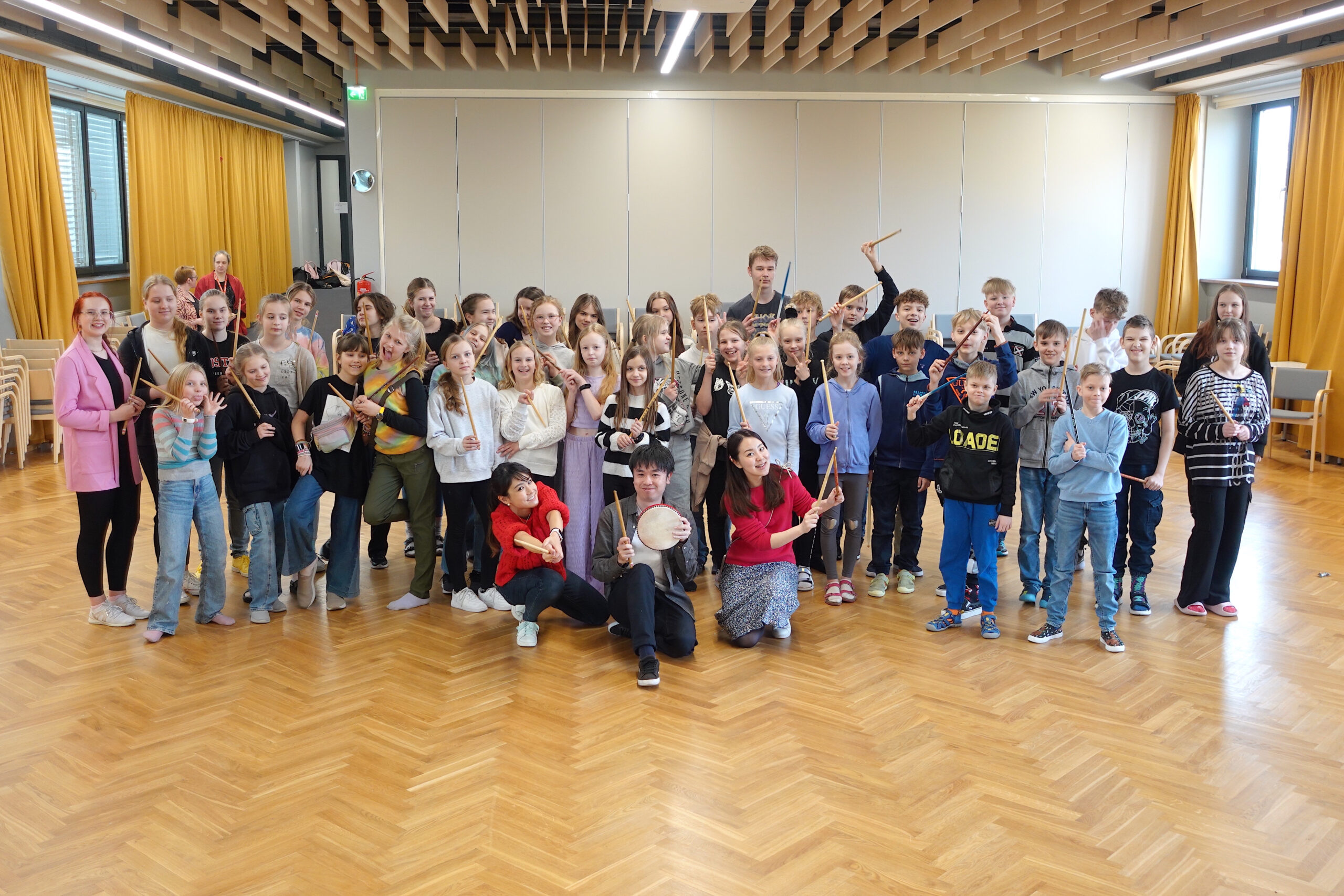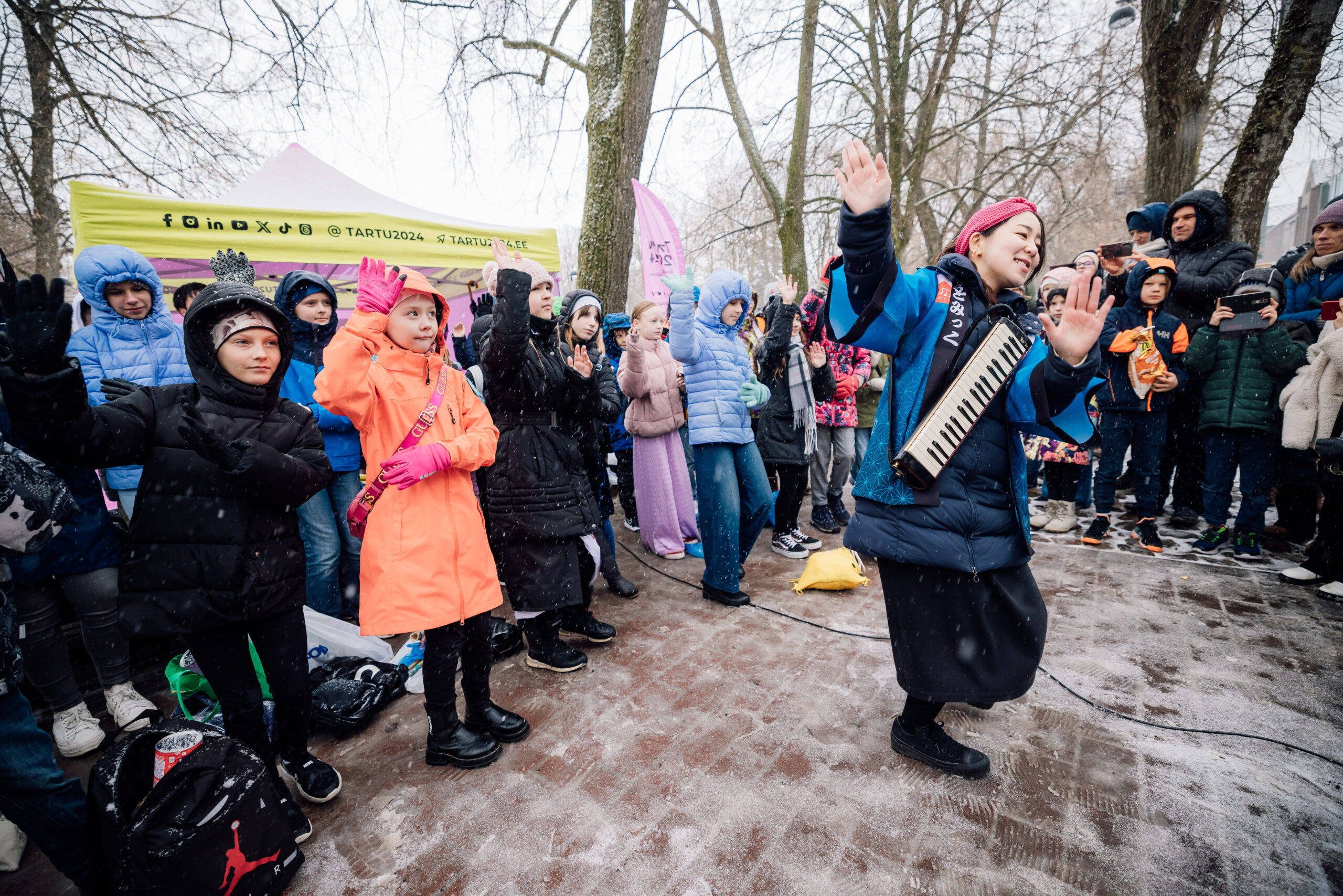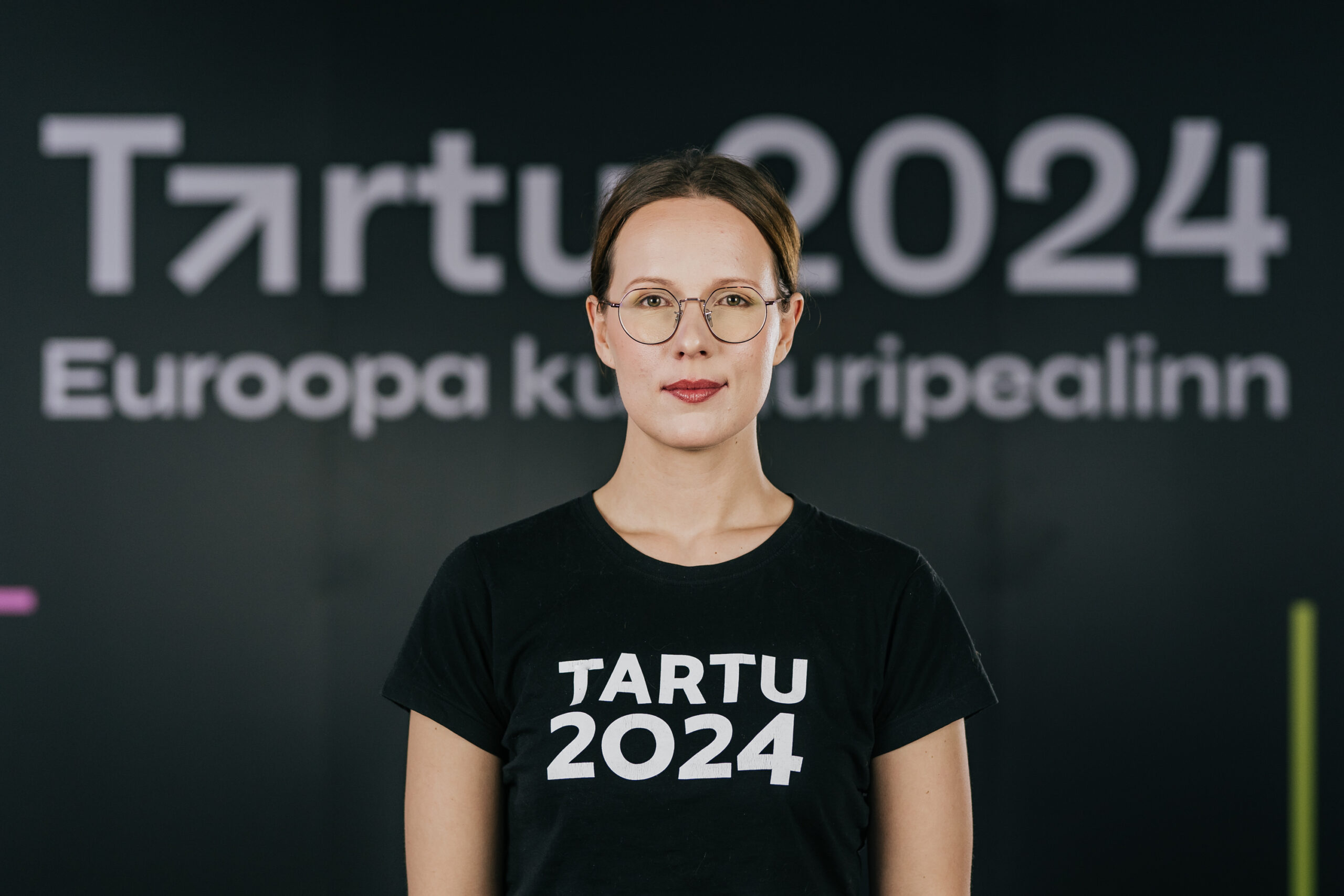Column
ColumnBridging Cultures Through Music
Across continents, a symphony of understanding bloomed in the heart of Tartut, Estonia. From April 1st to 3rd, 2024, a unique collaboration between Japanese artists group Otomic (including artists Natsuki Sakamoto, Shiori Sakurai and Shingo Takase), Tartu Raatuse Schoolstudents (grades 4-9), and the Tartu 2024 Foundation orchestrated a three-day cultural exchange program centered on music.
The program unfolded like a thoughtfully composed piece. Each day began with an ice-breaker session, where music bridged the gap between cultures. Students, some already possessing a spark of interest in Japan, were introduced to Japanese history and culture through interactive activities. Learning the playful Japanese children’s song “Umi” together served as a delightful step toward cultural immersion.
But the program didn’t just sing praises of tradition; it embraced sustainability. A highlight was the creation of musical instruments—not forged from metal or carved from wood but crafted from discarded materials. This eco-friendly initiative resonated deeply with the students, sparking curiosity and admiration for resourcefulness. Collaboration among individuals with different backgrounds and experiences led to the emergence of new ideas and approaches, resulting in more diverse and enriching artworks. Witnessing their creativity and adaptability during this process was truly impressive.
The days unfolded with dedicated practice sessions. Students delved into the lively rhythms of the Akita Prefecture’s “Donpan Bushi” and explored the beauty of the Estonian song “Juba Linnukesed” through sign language. Collaboration took center stage as teams formed to compose music. Armed with their self-made instruments, students tackled melodies and rhythms for both Japanese nursery rhymes and folk songs, weaving together a tapestry of sound that transcended language barriers.

The culmination of this collaborative effort arrived on the third day. Following a final round of practice, students proudly presented their musical creations to their peers. Their enthusiasm for showcasing their newfound appreciation for Japanese culture was heartwarming. This cultural exchange extended beyond the school walls, with students performing at the opening ceremony of the Portrait Event, solidifying their connection to the wider community.
Reflecting on the program’s impact, a sense of accomplishment resonates. While initial hesitation towards unfamiliar melodies melted away, a genuine fondness for Japan blossomed.
Post-activity engagement activities deepened this cultural immersion. Students explored cherry blossoms—a potent symbol in Japanese culture—through vibrant artwork, solidifying their understanding of its significance.
The project’s impact wasn’t confined to cultural appreciation. The act of creating instruments from recycled materials sparked an environmental awareness among the students. They recognized the importance of adopting environmentally friendly practices in their daily lives and felt a sense of joy in contributing positively to the environment. This translated into a personal commitment to incorporating sustainable practices into their lives, fostering a sense of empowerment and responsibility towards our planet.
But perhaps the most enriching aspect of this collaboration was the blossoming of friendships and teamwork. Students discovered the power of working together, learning to respect each other and celebrate their diverse backgrounds—a skill set invaluable for their future endeavors.

The collaboration itself deserves special mention. Working alongside Japanese artists proved to be a cornerstone of the program’s success. Direct exposure to Japanese culture, beyond the limitations of textbooks and videos, fostered a deeper understanding for both sides. Cultural exchange wasn’t merely theoretical; it became a vibrant exchange of creative ideas. Japanese traditions and musicality served as inspiration, but students masterfully wove them into their own cultural fabric, resulting in unique and enriching artistic expressions.
This experience highlighted the power of communication that transcends language barriers. Music and art became a shared language, fostering emotions and connections that transcended cultural differences. Students, faced with unfamiliarity, demonstrated remarkable adaptability and resourcefulness, finding creative solutions to bridge the cultural gap.
The Japanese-Estonian collaboration served as more than just a program; it became a cultural bridge. It fostered understanding, nurtured environmental awareness, and ignited a passion for teamwork. Looking towards the future, this collaboration offers a promising model. By fostering connections through art and music, we can continue to build bridges of understanding between cultures, enriching lives and inspiring future generations. Let the music continue to play, building bridges of understanding and inspiring future generations to embrace the beauty of our shared humanity.








